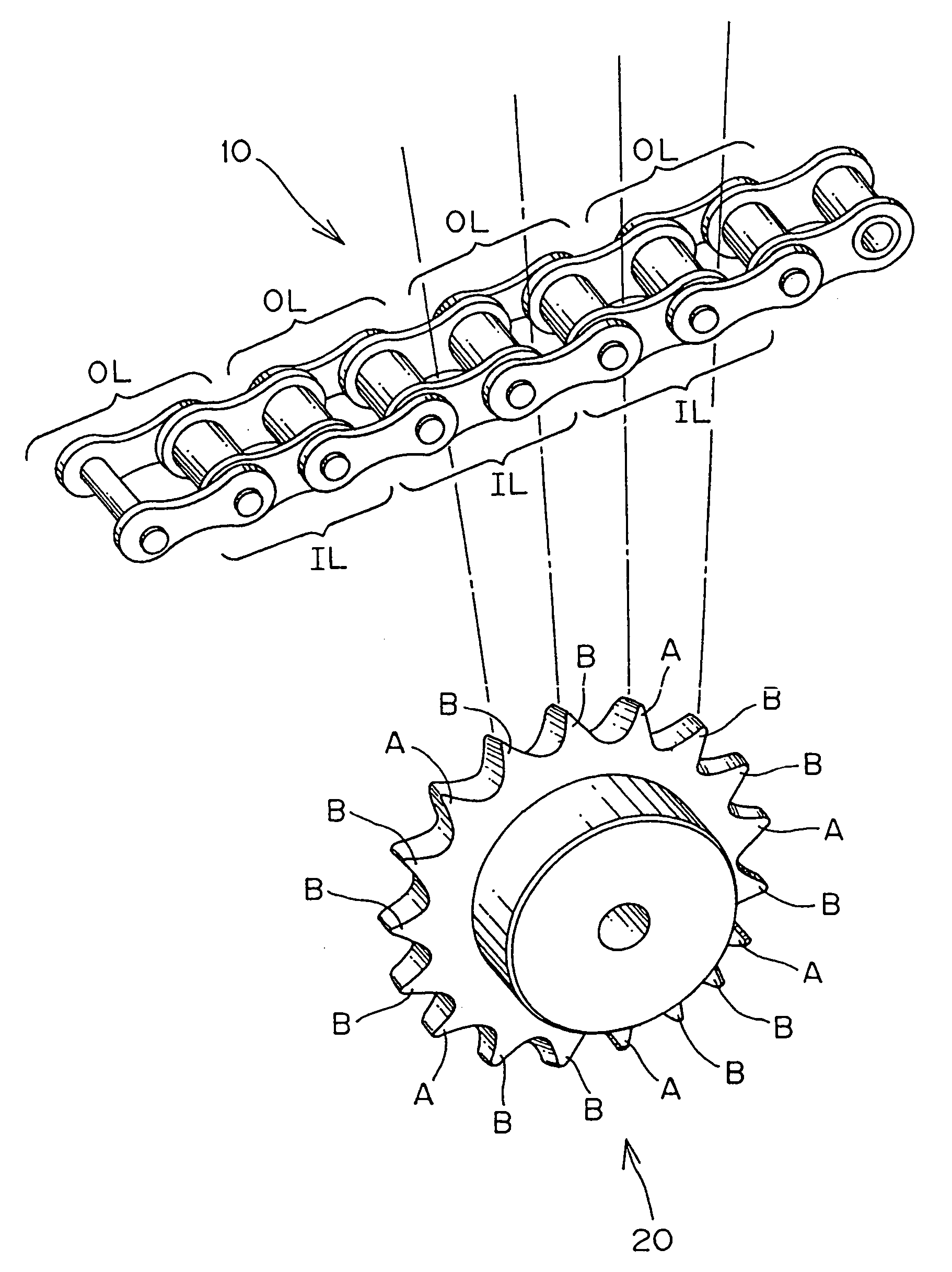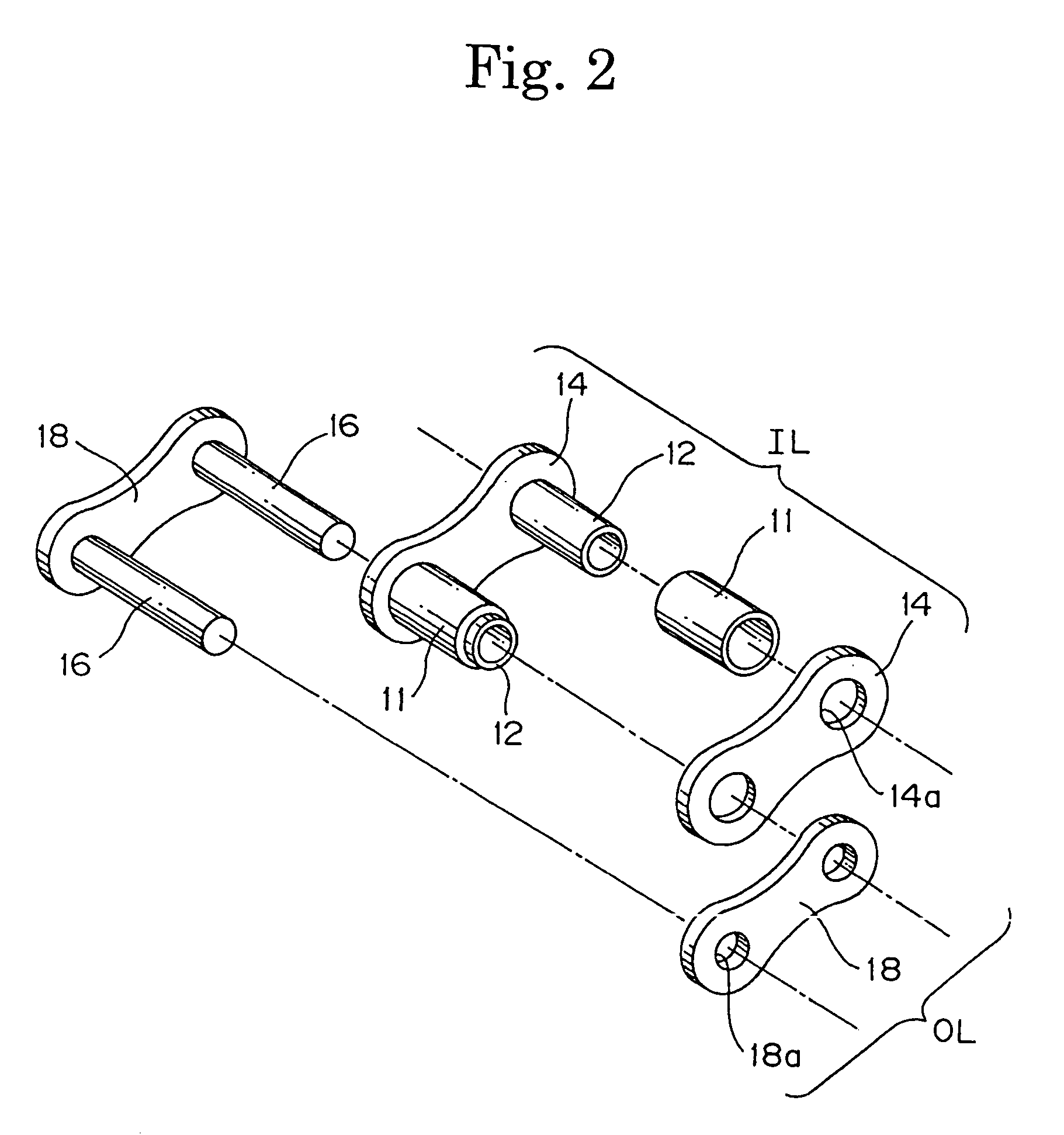Roller chain transmission device
a transmission device and roller chain technology, applied in the direction of gearing, gearing elements, hoisting equipments, etc., can solve the problems of abnormal noise, not being avoided, and large engagement noise between the roller and the chain, so as to increase the engagement noise reduction effect, enhance the engagement noise reduction, and enhance the effect of engagement noise reduction
- Summary
- Abstract
- Description
- Claims
- Application Information
AI Technical Summary
Benefits of technology
Problems solved by technology
Method used
Image
Examples
Embodiment Construction
[0025]The roller chain transmission device according to the invention comprises a roller chain, the details of which are shown in FIG. 2. The chain includes an inner link IL, comprising a pair of inner plates 14 with bushing holes 14a, into which the ends of two cylindrical bushings 12 are respectively press-fit. A roller 11 fits rotatably on each bushing 12. Pins 16 are press fit in pin holes 18a of a pair of outer link plates 18, which are disposed adjacent the outsides of the inner link plates. As seen in FIG. 2, one of the pins 16 extends through one of the bushings of the inner link IL, fitting loosely therein so that the outer link OL is in articulating relationship with the inner link IL. Similar inner and outer links are articulably connected to one another in alternating relationship to form a flexible roller chain 10, as shown in FIG. 1. The flexible roller chain can engage a driving sprocket 20, and at least one driven sprocket (not shown) to form a chain transmission in ...
PUM
 Login to View More
Login to View More Abstract
Description
Claims
Application Information
 Login to View More
Login to View More - R&D
- Intellectual Property
- Life Sciences
- Materials
- Tech Scout
- Unparalleled Data Quality
- Higher Quality Content
- 60% Fewer Hallucinations
Browse by: Latest US Patents, China's latest patents, Technical Efficacy Thesaurus, Application Domain, Technology Topic, Popular Technical Reports.
© 2025 PatSnap. All rights reserved.Legal|Privacy policy|Modern Slavery Act Transparency Statement|Sitemap|About US| Contact US: help@patsnap.com



